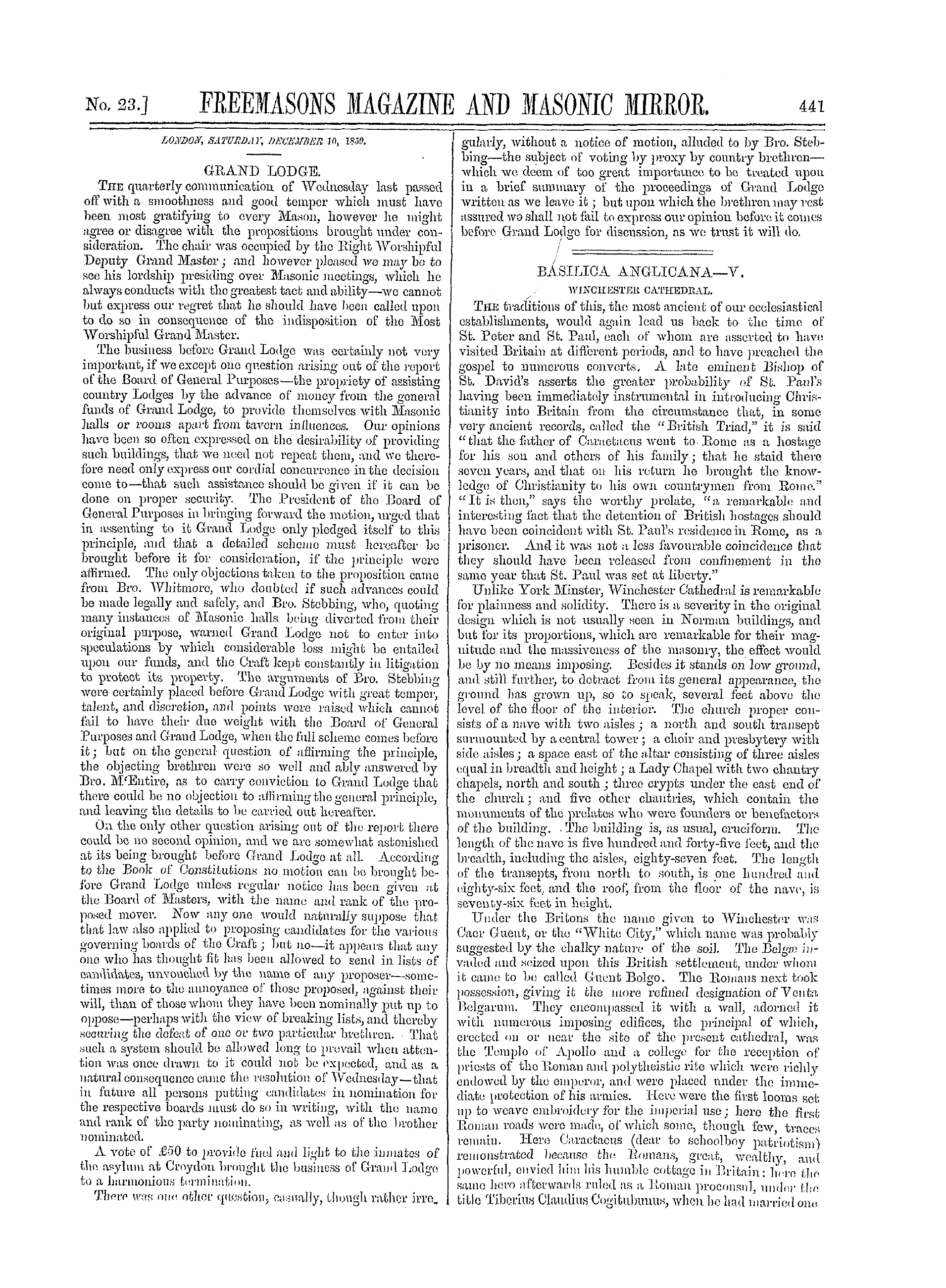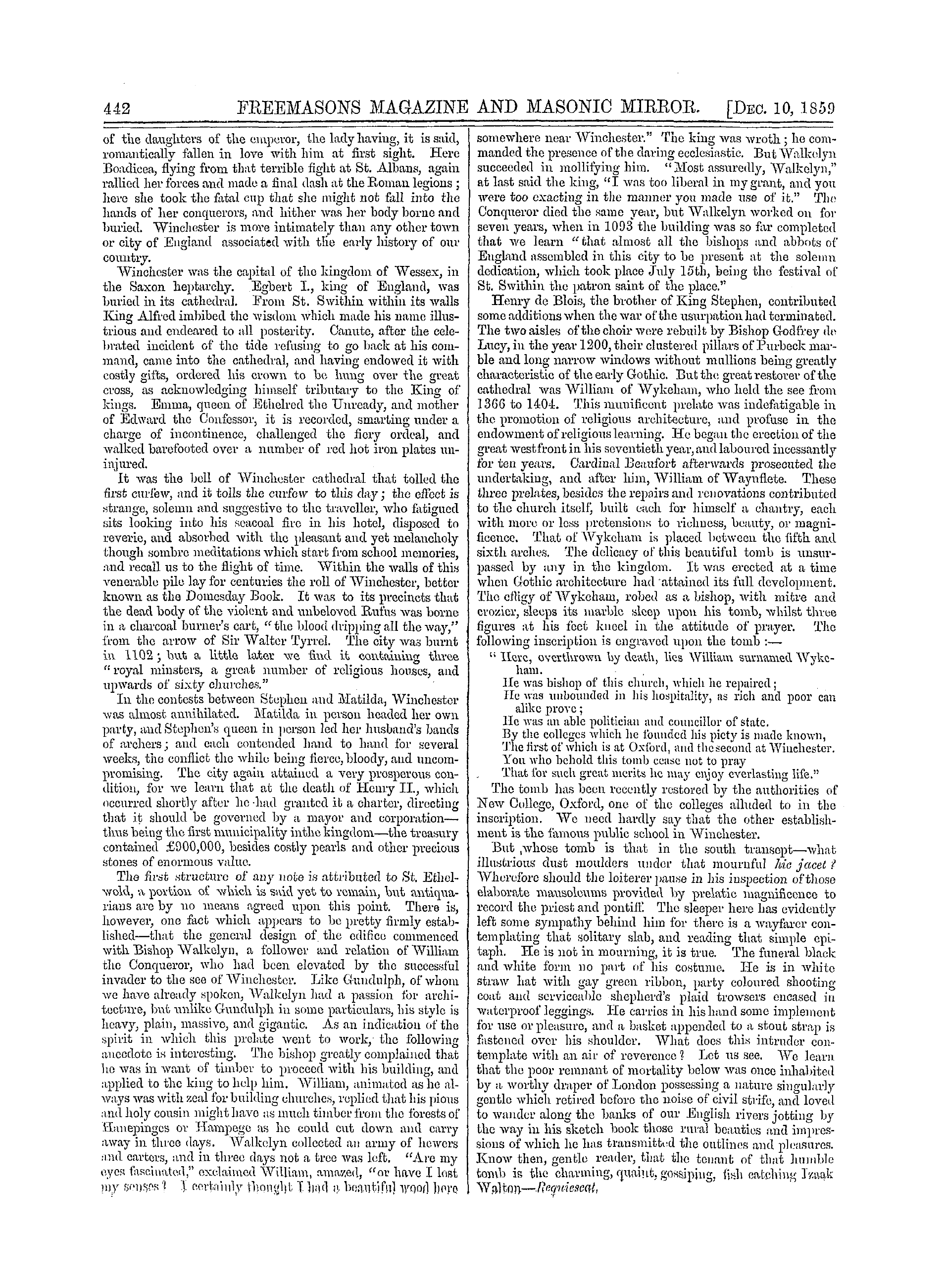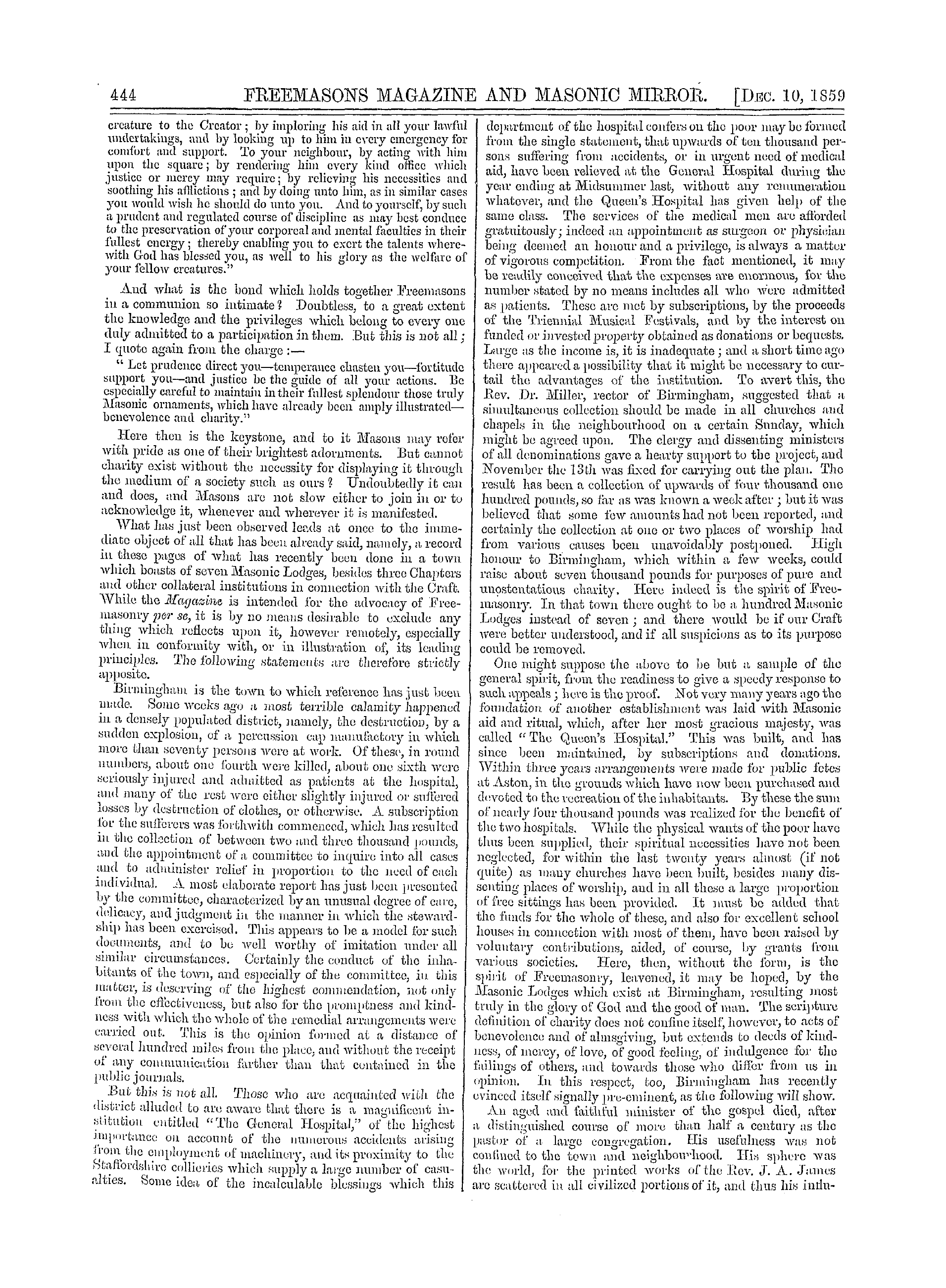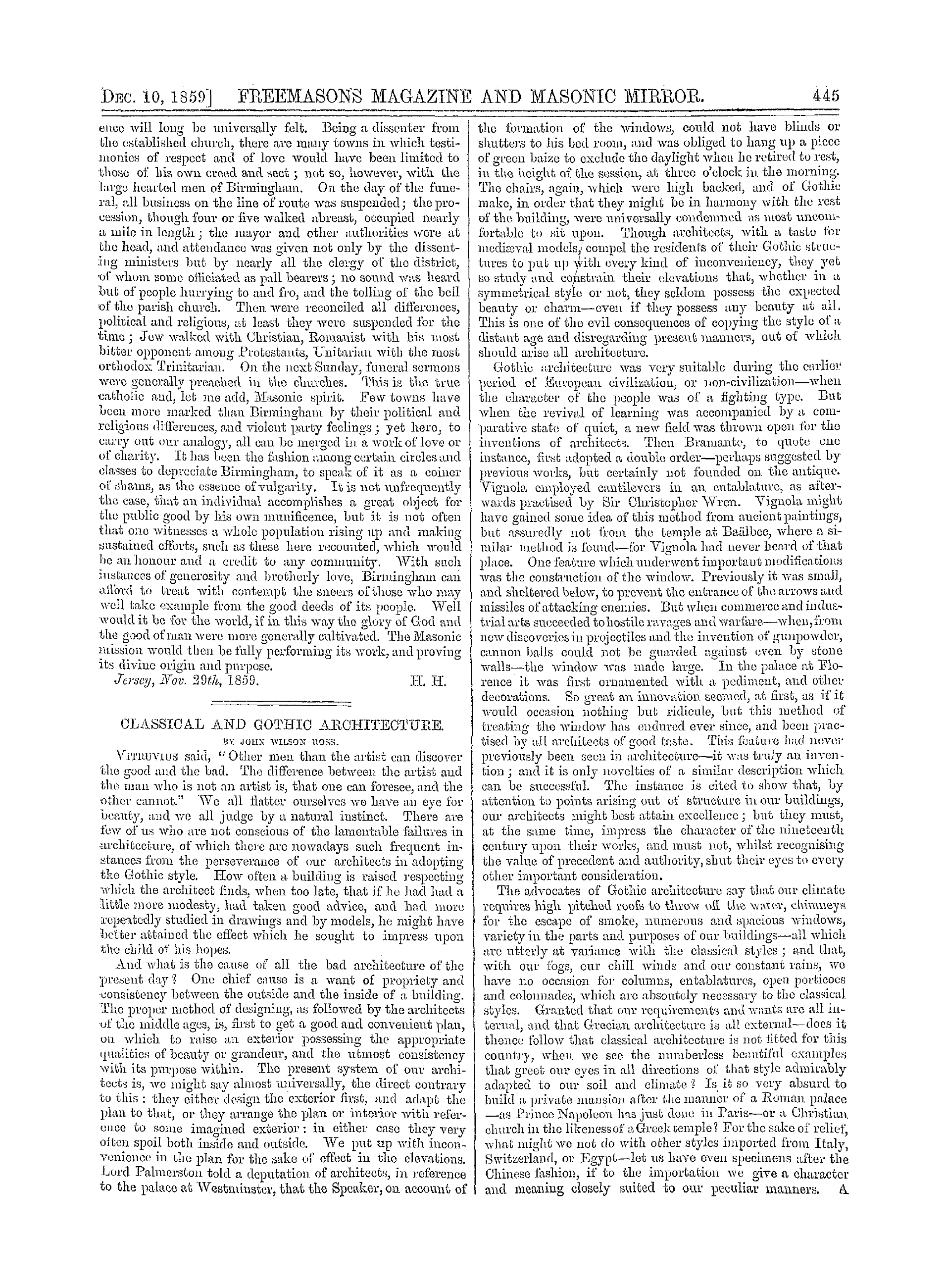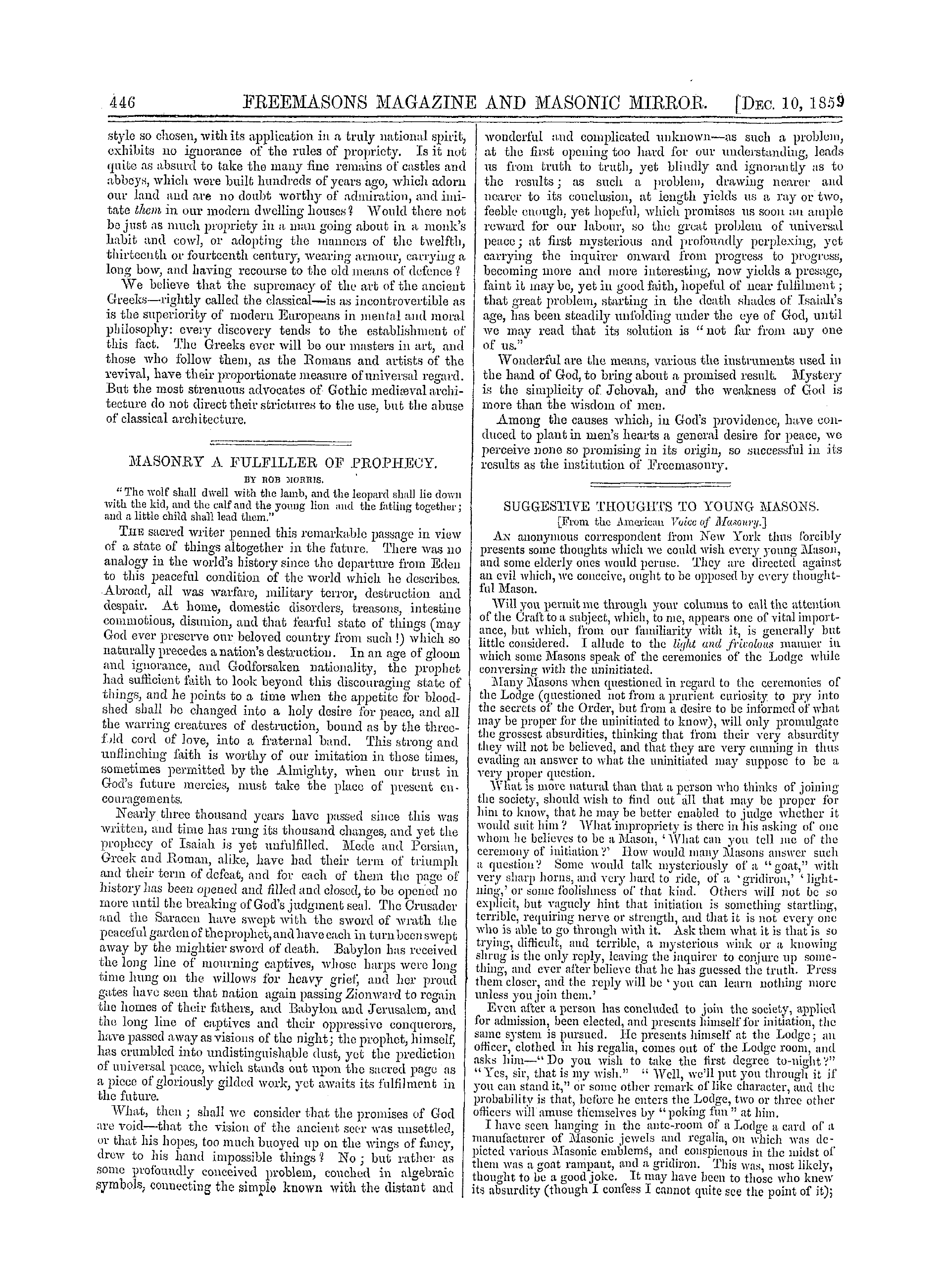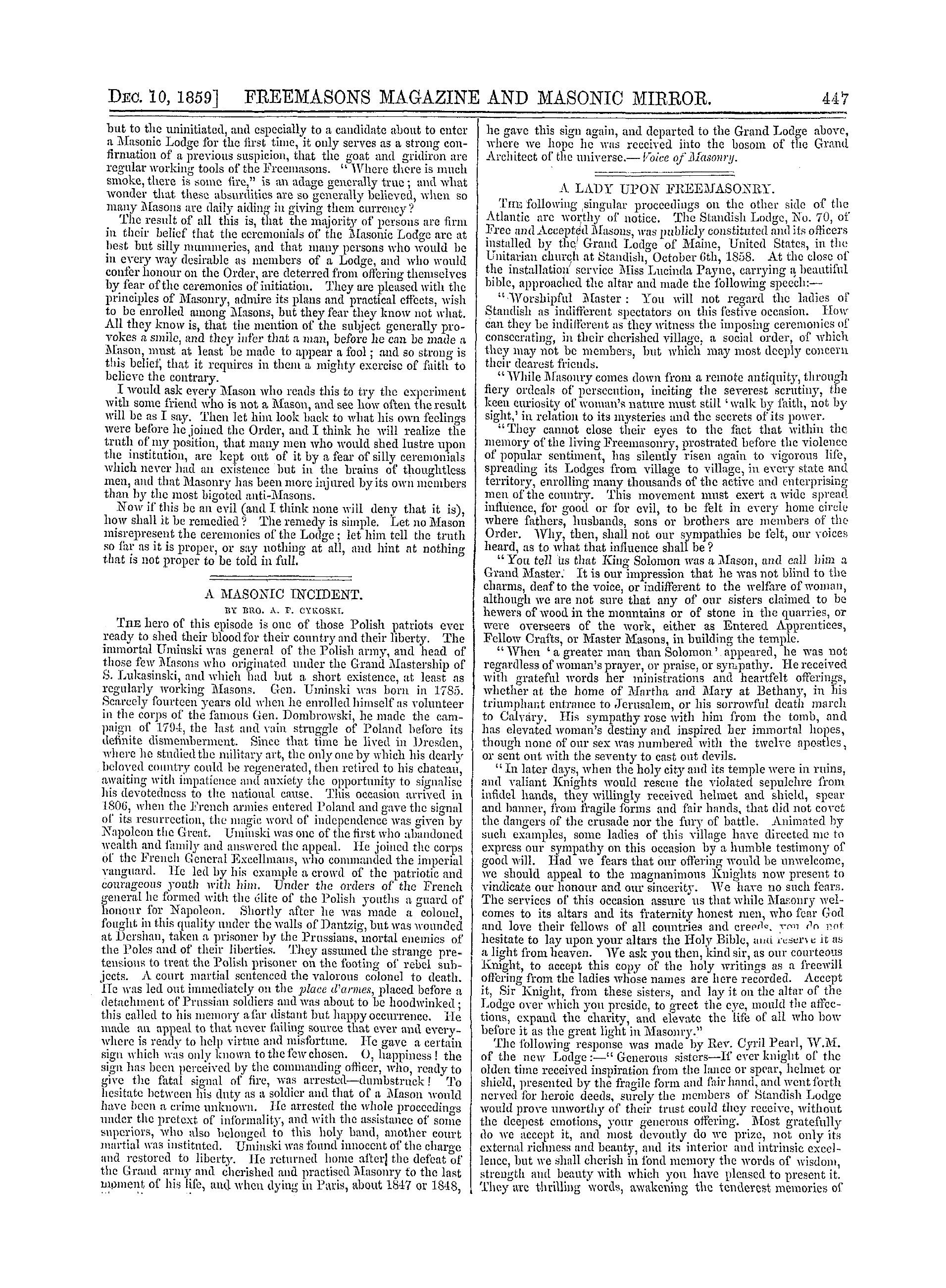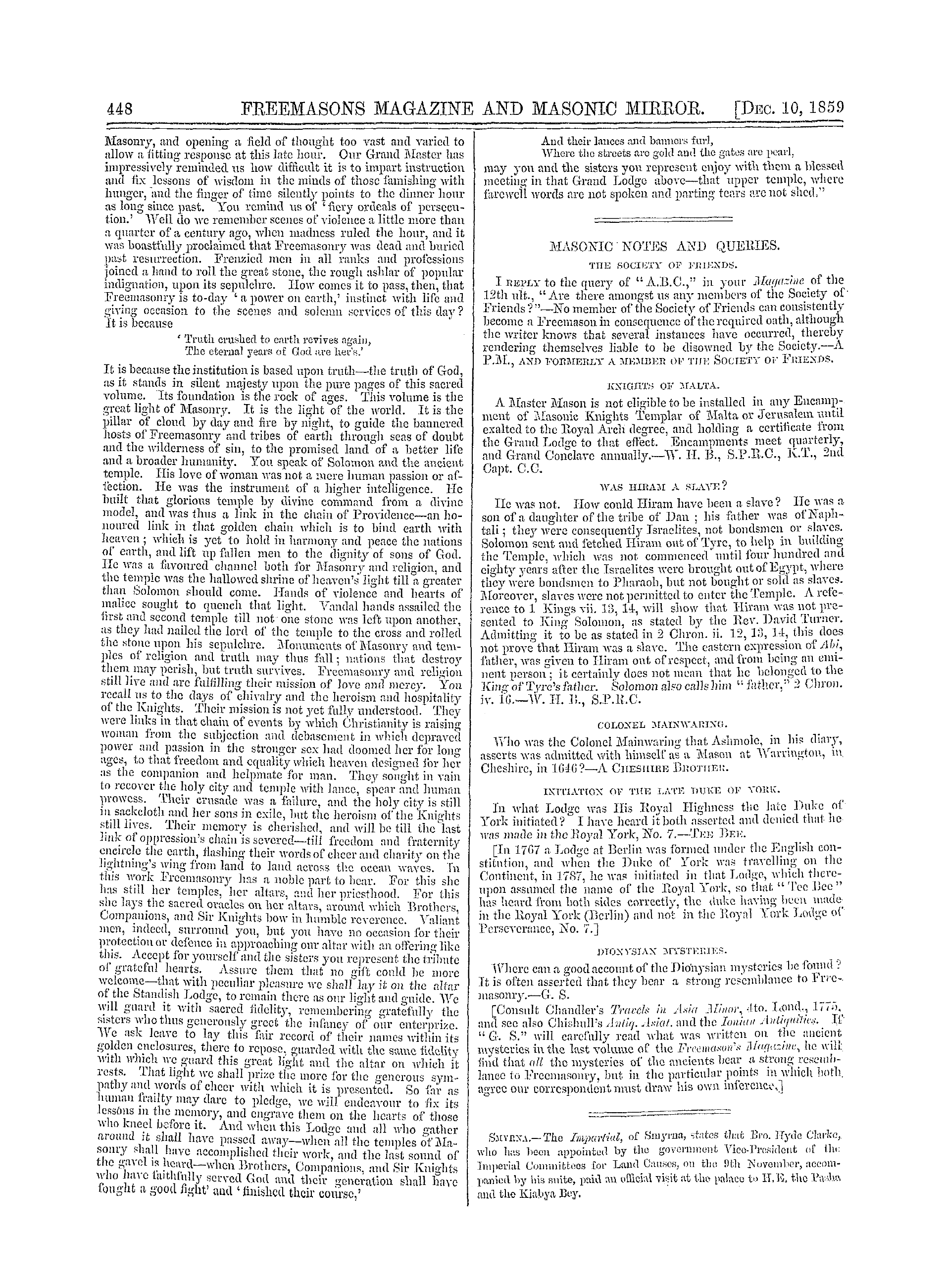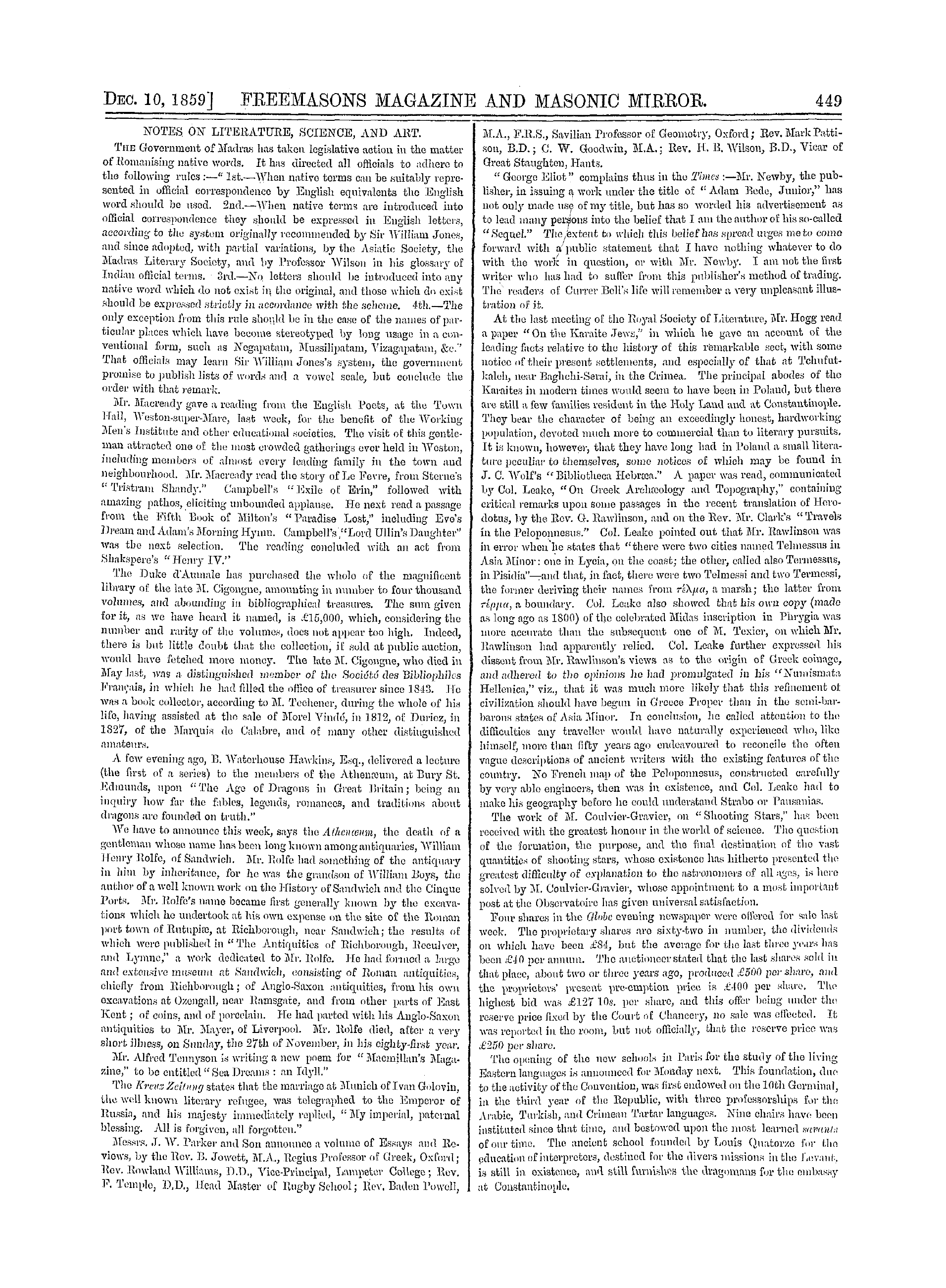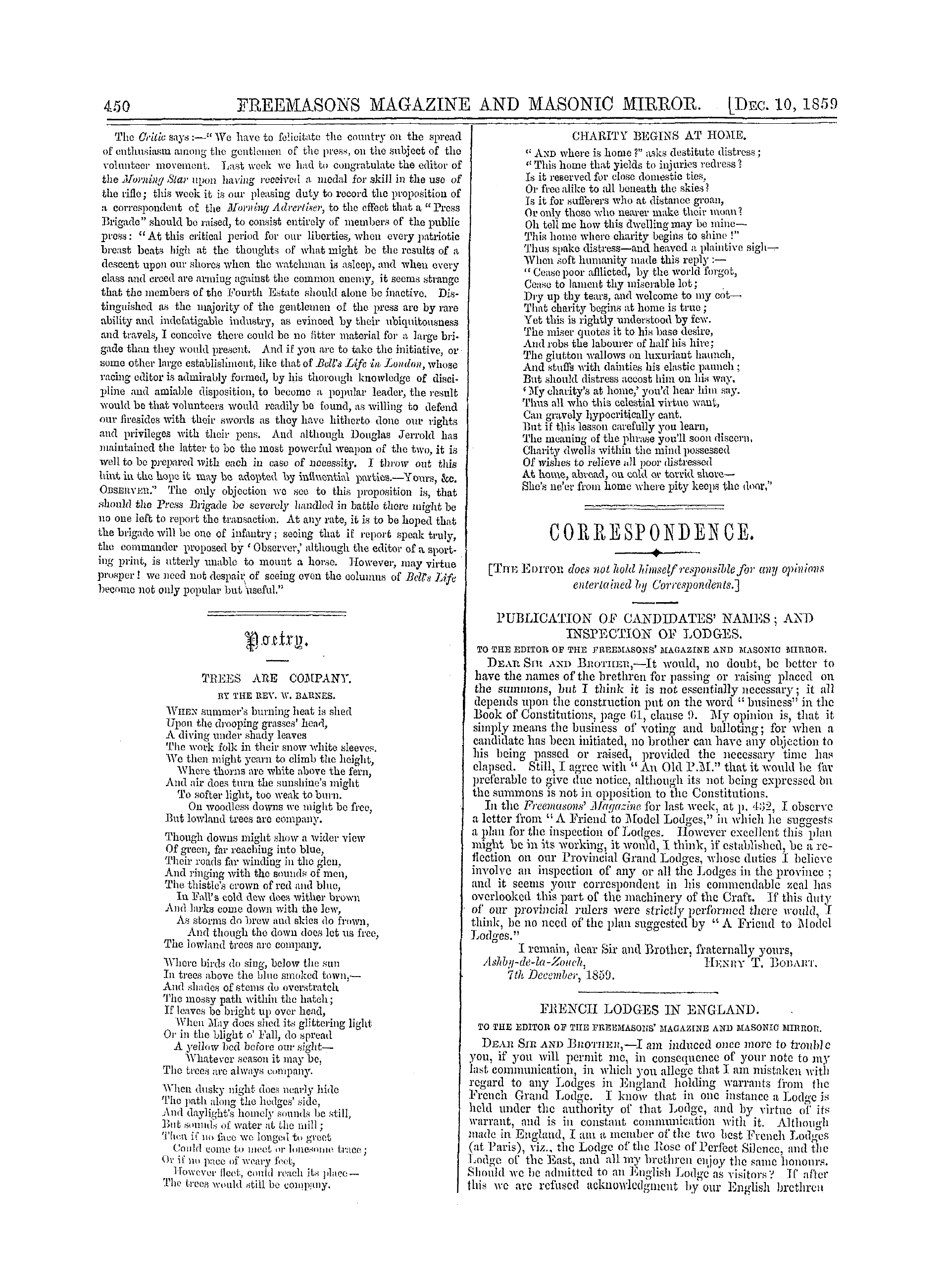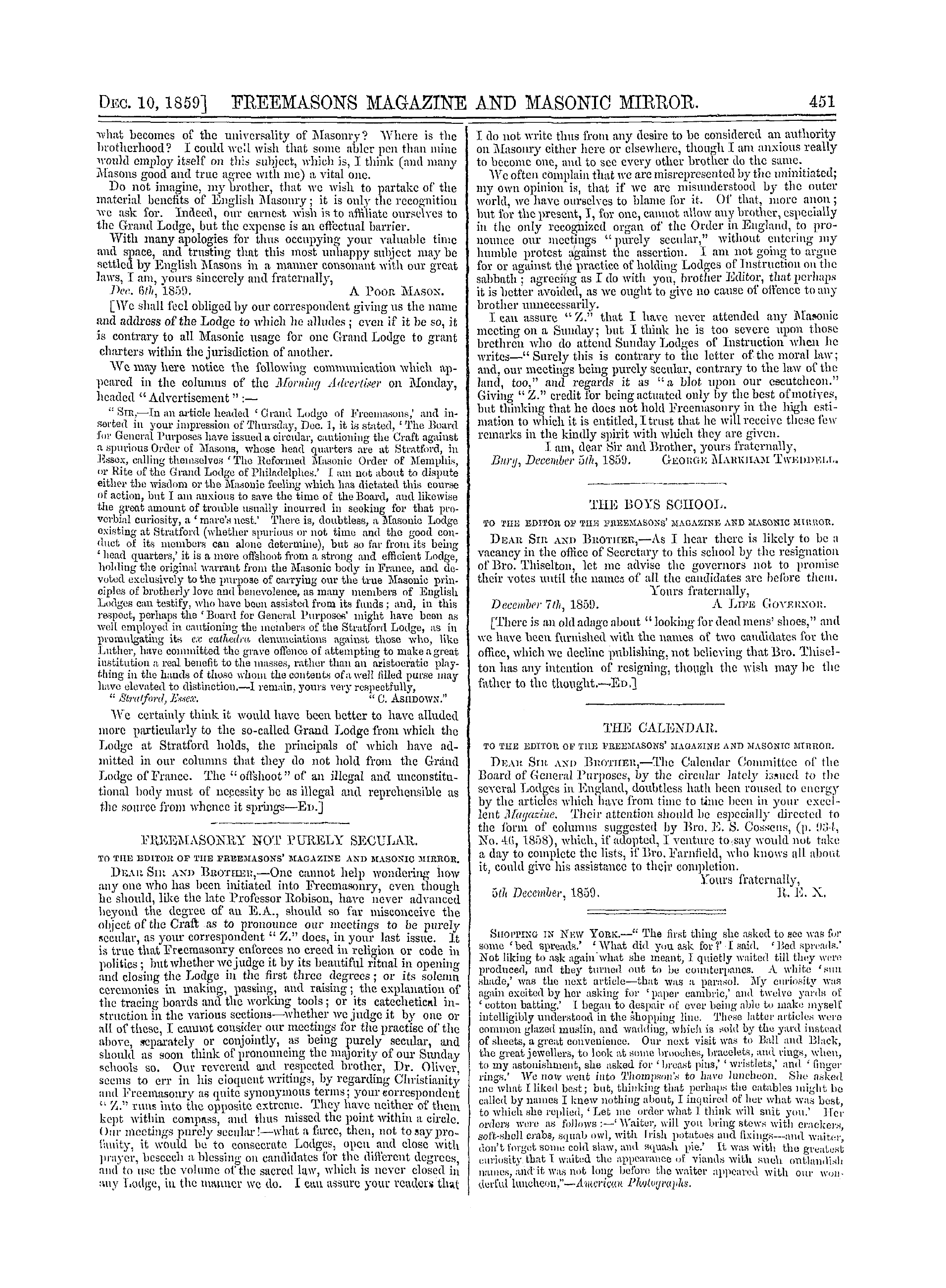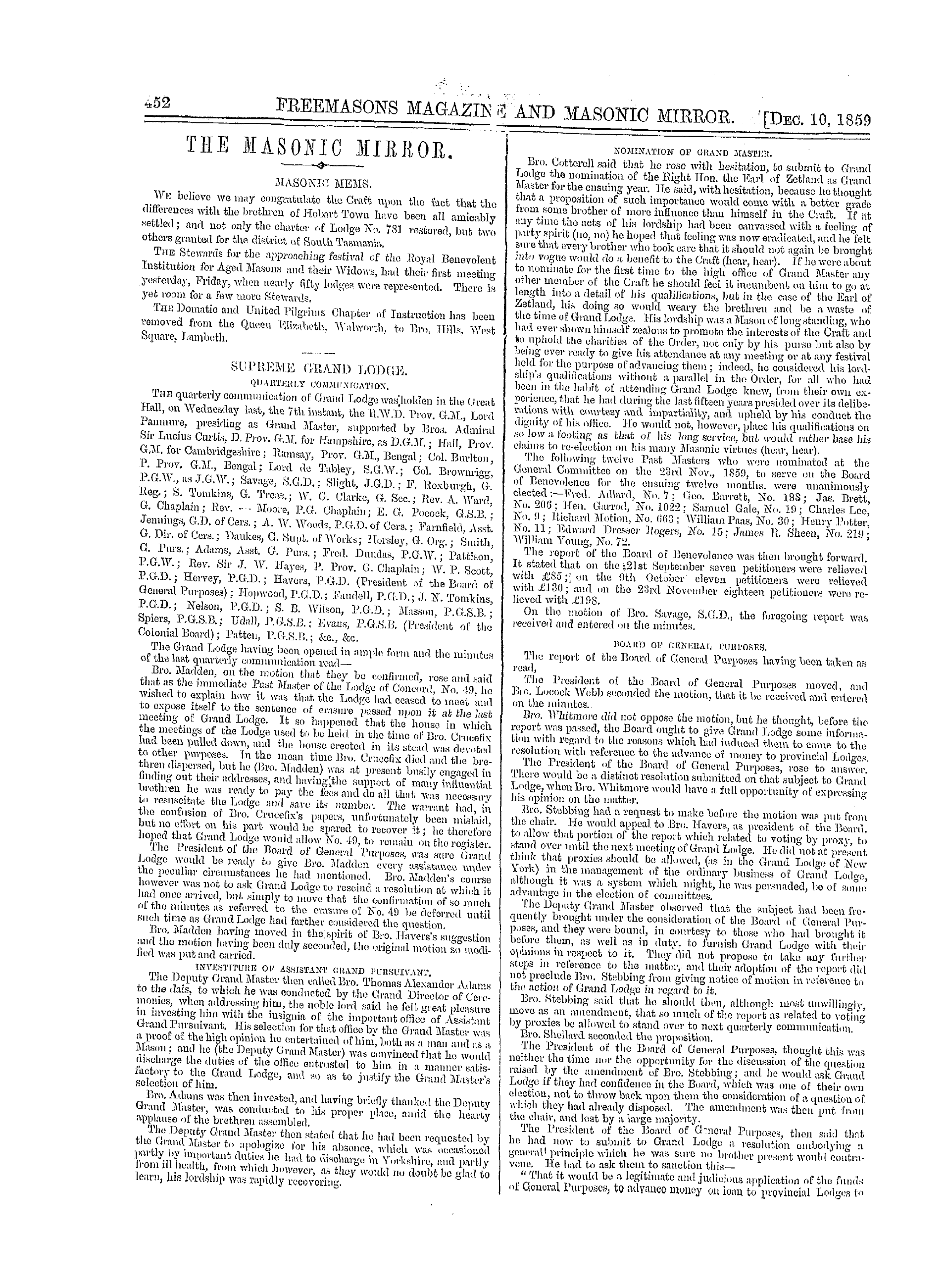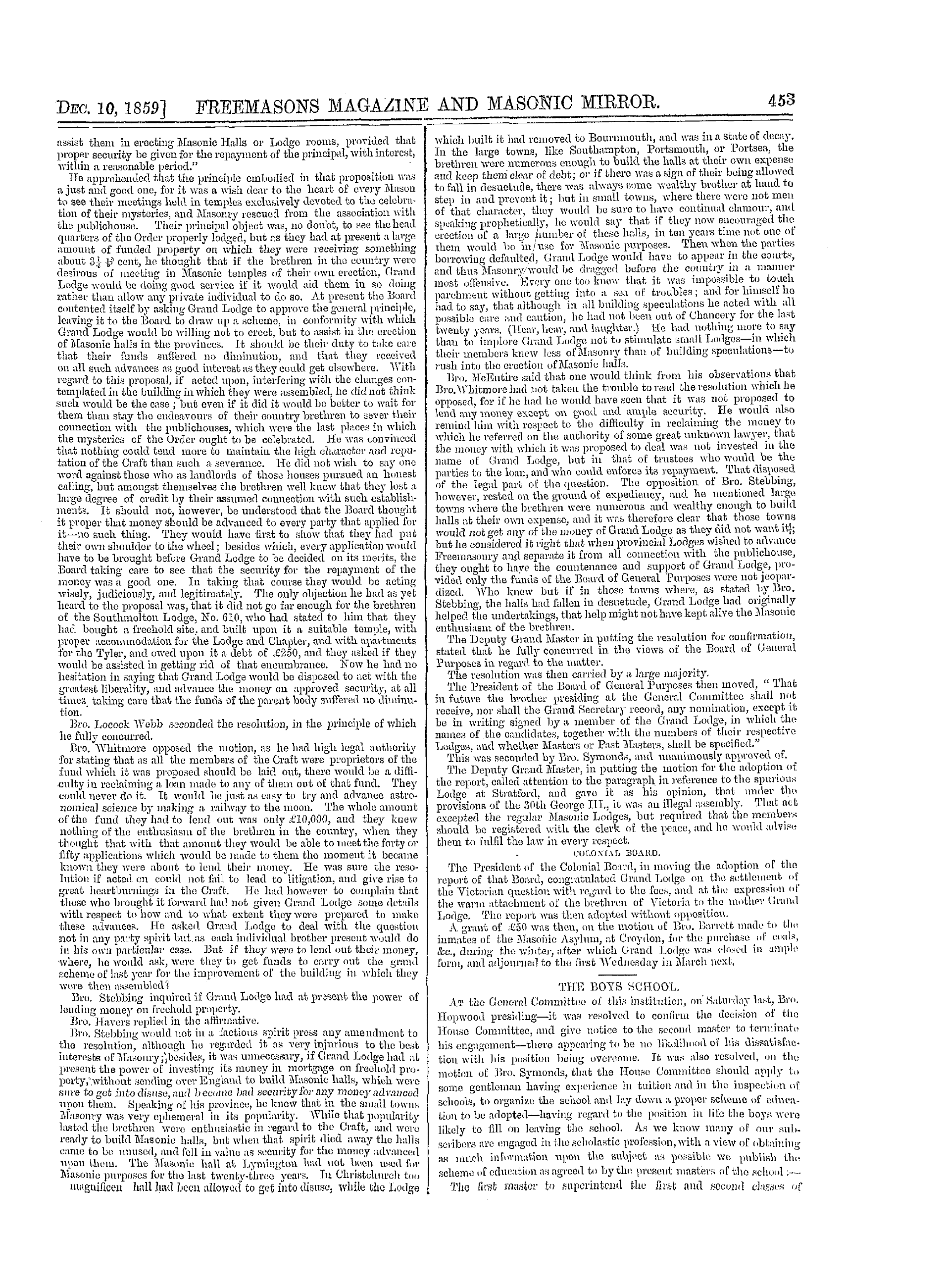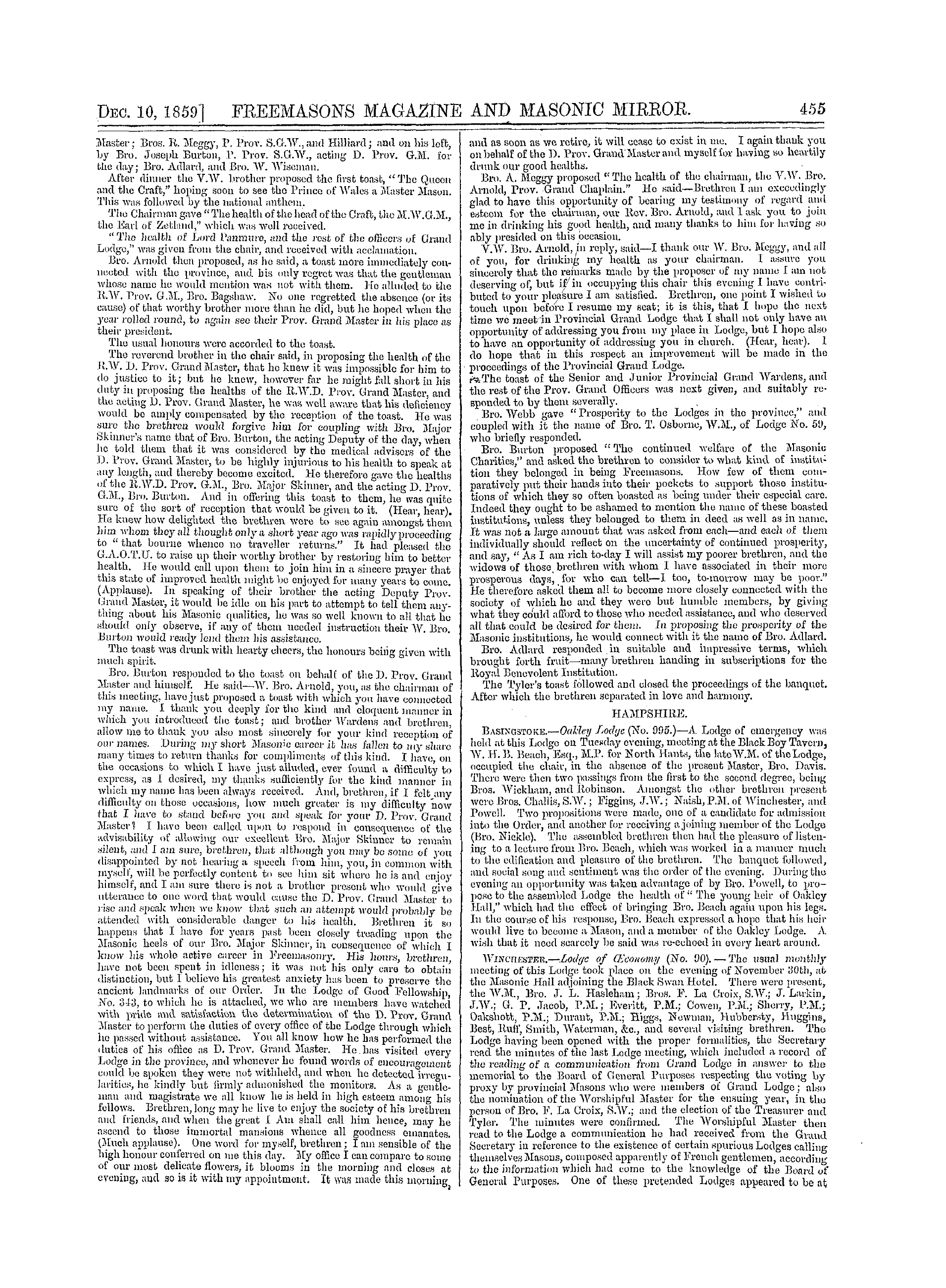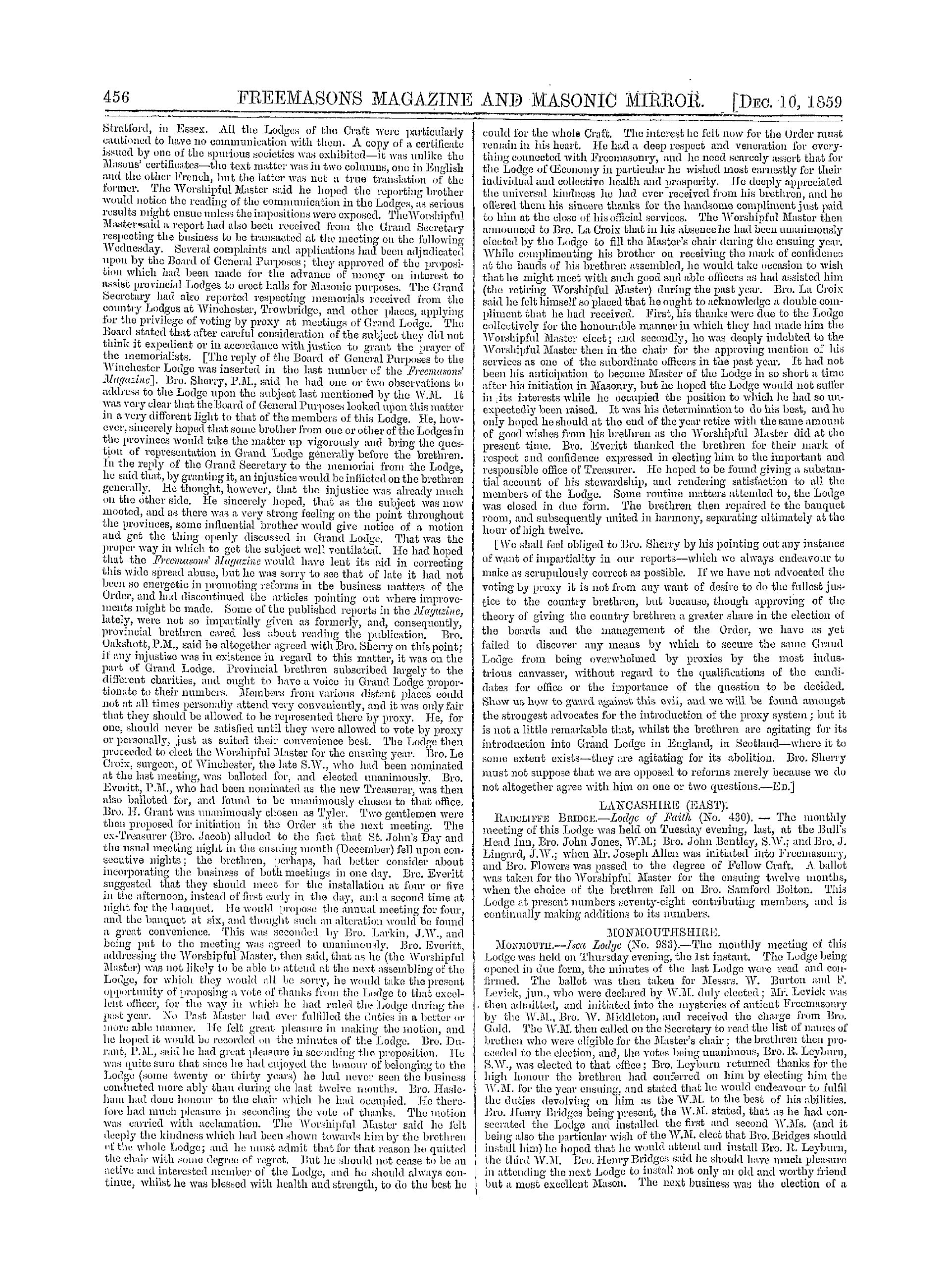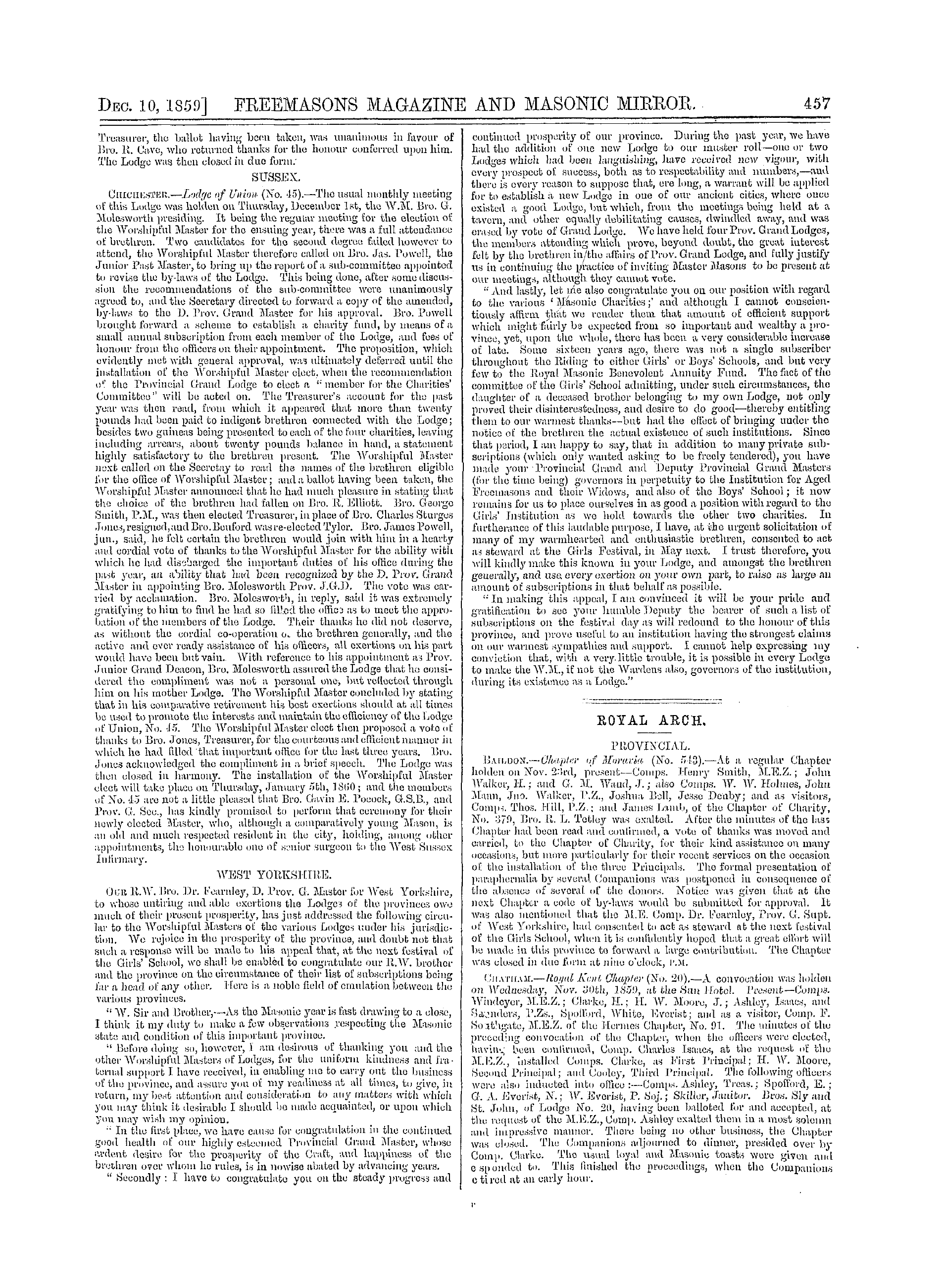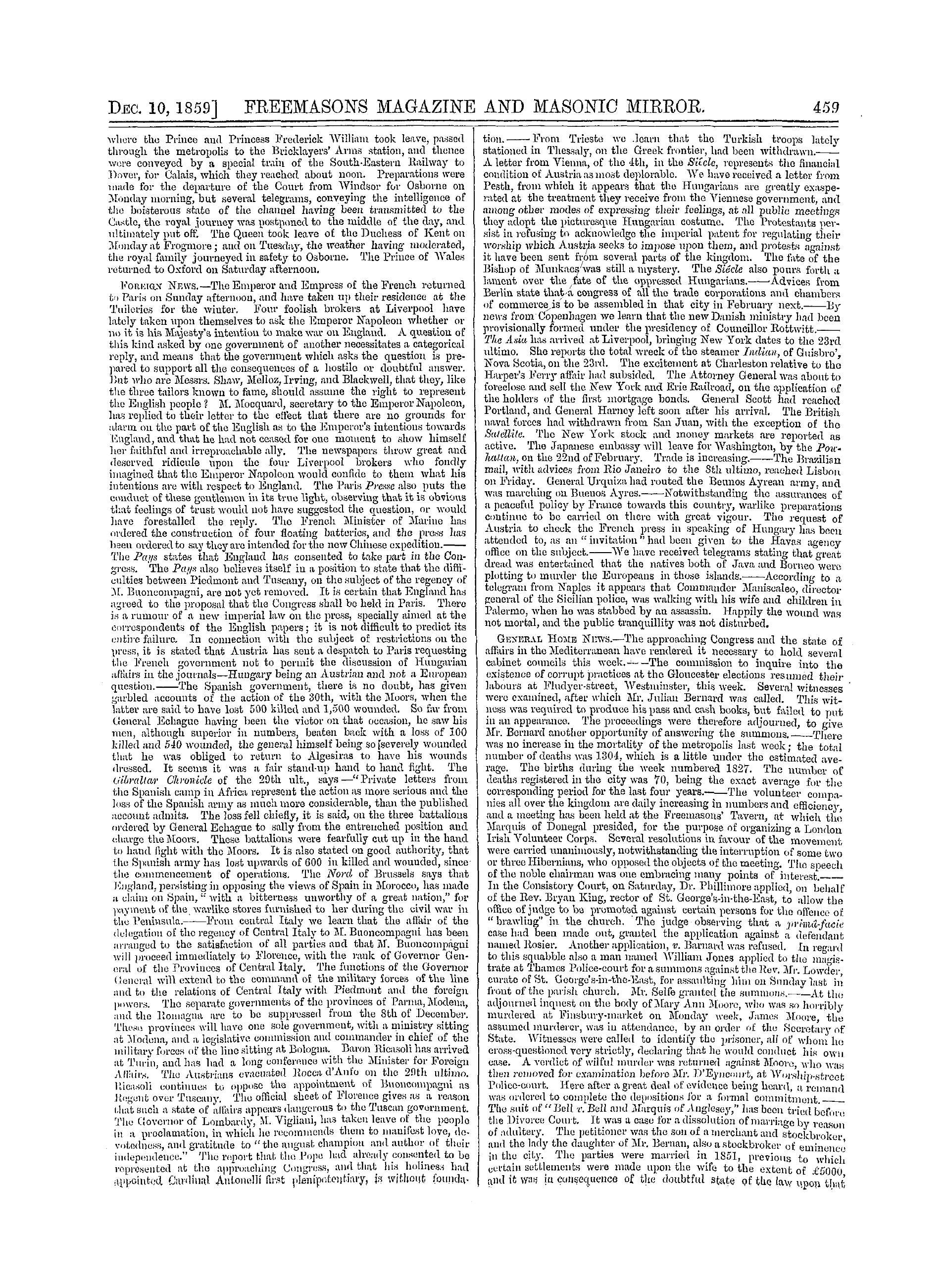-
Articles/Ads
Article BASILICA ANTGLICANA—V. ← Page 2 of 3 →
Note: This text has been automatically extracted via Optical Character Recognition (OCR) software.
Basilica Antglicana—V.
of the daughters of the emperor , the lady having , it is said , romantically fallen in love with him at first sight . Here Boadicea , flying from that terrible fight at St . Albans , again rallied her forces and made a final dash at the Roman legions ; here she took the fatal cup that she might not fall into the hands of her conquerors , and hither was her body borne and buried . Winchester is more intimately than any other town
or city of England associated with tlie early history of our country . Winchester was the capital of the kingdom of Wessex , in the Saxon heptarchy . Egbert I ., king of England , was buried in its cathedral . Prom St . Swithin within its walls
King Alfred imbibed the wisdom which made his name illustrious and endeared to all posterity . Canute , after the celebrated incident of the tide refusing to go back at his command , came into the cathedral , and having endowed it with costly gifts , ordered his crown to be hung over the great cross , as acknowledging himself tributary to the King of
kings . Emma , queen of Ethelred the Unready , and mother of Edward tho Confessor , it is recorded , smarting under a charge of incontinence , challenged the fiery ordeal , and walked barefooted over a number of red hot iron plates uninjured . It was the bell of Winchester cathedral that tolled the
first curfew , and it tolls the curfew to this day ; tho effect is strange , solemn and suggestive to the traveller , who fatigued sits looking into his seacoal fire in his hotel , disposed to reverie , and absorbed with the pleasant and yet melancholy though sombre meditations which start from school memories , and recall us to the flight of time . Within the walls of this
venerable pile lay for centuries the roll of Winchester , better known as the Domesday Book . It was to its precincts that the dead body of the violent and unbelovcd Rufus was borne in a charcoal burner ' s cart , "the blood dripping all the way , " from the arrow of Sir Walter Tyrrel . The city was burnt in 1102 ; but a , little later we find it containing three
" royal minsters , a great number of religious houses , and upwards of sixty churches . " In tho contests between Stephen and Matilda , Winchester was almost annihilated . Matilda in person headed her own party , and Stephen ' s queen in person led her husband ' s bauds of archers : and each contended hand to hand for several
weeks , the conflict the while being fierce , bloody , and uncompromising . The city again attained a very prosperous condition , for we learn that at the death of Henry II ., which occurred shortly after he -had granted it a charter , directing that it should be governed by a mayor and corporationthus being the first municipality inthe kingdom—the treasury contained £ 900000 besides costly pearls and other precious
, , stones of enormous value . Tho first structure of any note is attributed to St . Ethelwold , A portion of which is said yet to remain , but antiquarians are by no means agreed upon this point . There is , however , one fact which appears to be pretty firmly established—that the general design of the edifice commenced
with Bishop Walkolyn , a follower and relation of William the Conqueror , who had been elevated by the successful invader to the see of Winchester . Like Gundul ph , of whom we have already spoken , Walkelyn had a passion for architecture , but unlike Gundul ph in some particulars , his style is heavy , plain , massiveand gigantic . As an indication of the
, spirit in which this prelate went to work , the following anecdote is interesting . Tho bishop greatly complained that lie was in want of timber to proceed with his building , and applied to the king to help him . William , animated as he always was with zeal for building churches , replied that his pious and holy cousin might have as much timber from the forests of
Hanepingcs or Hampege as ho could cut down and carry away in three days . Walkelyn collected an army of hewers and carters , and in three days not a tree was left . "Are my eyes fascinated , " exclaimed William , amazed , " or have I lost my seiisos 1 \ certainl y thought I hat ] n beautiful wood horo .
somewhere near Winchester . " The king was wroth ; he commanded the presence of the daring ecclesiastic . But Walkelyn succeeded in mollifying him . " Most assuredly , Walkelyn , " at last said the king , "I was too liberal in my grant , and you were too exacting in the manner you made use of it . " The Conqueror died the same yearbut Walkelyn worked on for
, seven years , when in 1093 the building was so far completed that we learn " that almost all the bishops and abbots of England assembled in this city to be present at the solemn dedication , which took place July 15 th , being the festival of St . Swithin the patron saint of the place . " Henry de Blois , the brother of King Stephencontributed
, some additions when the war of the usurpation had terminated . The two aisles of the choir were rebuilt by Bishop Godfrey do Lucy , in the year 1200 , their clustered pillars of Purbeck marble and long narrow windows without mullions being greatly characteristic of the early Gothic . But the great restorer of the cathedral was William of Wykeham , who held the see from
13 G 6 to 1404 . This niuuificent prelate was indefatigable in the promotion of religious architecture , and profuse in the endowment of religious learning . He began the erection of the great westfront in his seventieth year , aud laboured incessantl y for ten years . Cardinal Beaufort afterwards prosecuted the undertaking , and after him , William of Waynftete . These
three prelates , besides the repairs and rcn ovations contributed to the church itself , built each for himself a chantry , each with more or less pretensions to richness , beauty , or magnificence . That of Wykeham is placed between the fifth and sixth arches . The delicacy of this beautiful tomb is unsurpassed by any in the kingdom . It was erected at a time
when Gothic architecture had "attained its full development . Tho effigy of Wykeham , robed as a bishop , with mitre and crazier , sleeps its marble sleep upon his tomb , whilst three figures at his feet kneel in the attitude of prayer . The following inscription is engraved upon the tomb : — " Here , overthrown by death , lies William suvnamed
Wykeham . He was bishop of this church , which he repaired ; He was unbounded in his hospitality , as rich and poor can alike prove ; He was an able politician and councillor of state . By the colleges which he founded his piety is made known , The first of which is at Oxfordmid the second at AVinehester .
, You who behold this tomb cease not to pray That for such great merits he may enjoy everlasting life . " The tomb has been recently restored by the authorities of New College , Oxford , one of the colleges alluded to in the inscription . We need hardly say that the other establishment is the famous public school in Winchester .
But . whose tomb is that in the south transept—what illustrious dust moulders under that mournful Mo jacet ? Wherefore should the loiterer pause in his inspection oftho . se elaborate mausoleums provided by prelatic magnificence to record the priest and pontiff . The sleeper here has evidently
left some sympathy behind him for there is a wayfarer contemplating that solitary slab , and reading that simple epitaph . He is not in mourning , it is true . The funeral black and white form no part of his costume . He is in white straw hat with gay green ribbon , party coloured shooting coat and serviceable shepherd ' s plaid trowsers encased in
waterproof leggings . He carries in his hand some implement for use or pleasure , and a basket appended to a stout strap is fastened over his shoulder . What docs this intruder contemplate with an air of reverence ? Let us see . We learn that the poor remnant of mortality below was once inhabited by a worthy draper of London possessing a nature singularly
gentle which retired before the noise of civil strife , and lovetl to wander along the banks of our English rivers jotting by the way in his sketch book those rural beauties and impressions of which he has transmitted the outlines and p leasures . Know then , gentle reader , that the tenant of that humble tomb is the charming , quaint , gossi ping , fish catching T / . tvak Walton— . Rec / uiescQl ,
Note: This text has been automatically extracted via Optical Character Recognition (OCR) software.
Basilica Antglicana—V.
of the daughters of the emperor , the lady having , it is said , romantically fallen in love with him at first sight . Here Boadicea , flying from that terrible fight at St . Albans , again rallied her forces and made a final dash at the Roman legions ; here she took the fatal cup that she might not fall into the hands of her conquerors , and hither was her body borne and buried . Winchester is more intimately than any other town
or city of England associated with tlie early history of our country . Winchester was the capital of the kingdom of Wessex , in the Saxon heptarchy . Egbert I ., king of England , was buried in its cathedral . Prom St . Swithin within its walls
King Alfred imbibed the wisdom which made his name illustrious and endeared to all posterity . Canute , after the celebrated incident of the tide refusing to go back at his command , came into the cathedral , and having endowed it with costly gifts , ordered his crown to be hung over the great cross , as acknowledging himself tributary to the King of
kings . Emma , queen of Ethelred the Unready , and mother of Edward tho Confessor , it is recorded , smarting under a charge of incontinence , challenged the fiery ordeal , and walked barefooted over a number of red hot iron plates uninjured . It was the bell of Winchester cathedral that tolled the
first curfew , and it tolls the curfew to this day ; tho effect is strange , solemn and suggestive to the traveller , who fatigued sits looking into his seacoal fire in his hotel , disposed to reverie , and absorbed with the pleasant and yet melancholy though sombre meditations which start from school memories , and recall us to the flight of time . Within the walls of this
venerable pile lay for centuries the roll of Winchester , better known as the Domesday Book . It was to its precincts that the dead body of the violent and unbelovcd Rufus was borne in a charcoal burner ' s cart , "the blood dripping all the way , " from the arrow of Sir Walter Tyrrel . The city was burnt in 1102 ; but a , little later we find it containing three
" royal minsters , a great number of religious houses , and upwards of sixty churches . " In tho contests between Stephen and Matilda , Winchester was almost annihilated . Matilda in person headed her own party , and Stephen ' s queen in person led her husband ' s bauds of archers : and each contended hand to hand for several
weeks , the conflict the while being fierce , bloody , and uncompromising . The city again attained a very prosperous condition , for we learn that at the death of Henry II ., which occurred shortly after he -had granted it a charter , directing that it should be governed by a mayor and corporationthus being the first municipality inthe kingdom—the treasury contained £ 900000 besides costly pearls and other precious
, , stones of enormous value . Tho first structure of any note is attributed to St . Ethelwold , A portion of which is said yet to remain , but antiquarians are by no means agreed upon this point . There is , however , one fact which appears to be pretty firmly established—that the general design of the edifice commenced
with Bishop Walkolyn , a follower and relation of William the Conqueror , who had been elevated by the successful invader to the see of Winchester . Like Gundul ph , of whom we have already spoken , Walkelyn had a passion for architecture , but unlike Gundul ph in some particulars , his style is heavy , plain , massiveand gigantic . As an indication of the
, spirit in which this prelate went to work , the following anecdote is interesting . Tho bishop greatly complained that lie was in want of timber to proceed with his building , and applied to the king to help him . William , animated as he always was with zeal for building churches , replied that his pious and holy cousin might have as much timber from the forests of
Hanepingcs or Hampege as ho could cut down and carry away in three days . Walkelyn collected an army of hewers and carters , and in three days not a tree was left . "Are my eyes fascinated , " exclaimed William , amazed , " or have I lost my seiisos 1 \ certainl y thought I hat ] n beautiful wood horo .
somewhere near Winchester . " The king was wroth ; he commanded the presence of the daring ecclesiastic . But Walkelyn succeeded in mollifying him . " Most assuredly , Walkelyn , " at last said the king , "I was too liberal in my grant , and you were too exacting in the manner you made use of it . " The Conqueror died the same yearbut Walkelyn worked on for
, seven years , when in 1093 the building was so far completed that we learn " that almost all the bishops and abbots of England assembled in this city to be present at the solemn dedication , which took place July 15 th , being the festival of St . Swithin the patron saint of the place . " Henry de Blois , the brother of King Stephencontributed
, some additions when the war of the usurpation had terminated . The two aisles of the choir were rebuilt by Bishop Godfrey do Lucy , in the year 1200 , their clustered pillars of Purbeck marble and long narrow windows without mullions being greatly characteristic of the early Gothic . But the great restorer of the cathedral was William of Wykeham , who held the see from
13 G 6 to 1404 . This niuuificent prelate was indefatigable in the promotion of religious architecture , and profuse in the endowment of religious learning . He began the erection of the great westfront in his seventieth year , aud laboured incessantl y for ten years . Cardinal Beaufort afterwards prosecuted the undertaking , and after him , William of Waynftete . These
three prelates , besides the repairs and rcn ovations contributed to the church itself , built each for himself a chantry , each with more or less pretensions to richness , beauty , or magnificence . That of Wykeham is placed between the fifth and sixth arches . The delicacy of this beautiful tomb is unsurpassed by any in the kingdom . It was erected at a time
when Gothic architecture had "attained its full development . Tho effigy of Wykeham , robed as a bishop , with mitre and crazier , sleeps its marble sleep upon his tomb , whilst three figures at his feet kneel in the attitude of prayer . The following inscription is engraved upon the tomb : — " Here , overthrown by death , lies William suvnamed
Wykeham . He was bishop of this church , which he repaired ; He was unbounded in his hospitality , as rich and poor can alike prove ; He was an able politician and councillor of state . By the colleges which he founded his piety is made known , The first of which is at Oxfordmid the second at AVinehester .
, You who behold this tomb cease not to pray That for such great merits he may enjoy everlasting life . " The tomb has been recently restored by the authorities of New College , Oxford , one of the colleges alluded to in the inscription . We need hardly say that the other establishment is the famous public school in Winchester .
But . whose tomb is that in the south transept—what illustrious dust moulders under that mournful Mo jacet ? Wherefore should the loiterer pause in his inspection oftho . se elaborate mausoleums provided by prelatic magnificence to record the priest and pontiff . The sleeper here has evidently
left some sympathy behind him for there is a wayfarer contemplating that solitary slab , and reading that simple epitaph . He is not in mourning , it is true . The funeral black and white form no part of his costume . He is in white straw hat with gay green ribbon , party coloured shooting coat and serviceable shepherd ' s plaid trowsers encased in
waterproof leggings . He carries in his hand some implement for use or pleasure , and a basket appended to a stout strap is fastened over his shoulder . What docs this intruder contemplate with an air of reverence ? Let us see . We learn that the poor remnant of mortality below was once inhabited by a worthy draper of London possessing a nature singularly
gentle which retired before the noise of civil strife , and lovetl to wander along the banks of our English rivers jotting by the way in his sketch book those rural beauties and impressions of which he has transmitted the outlines and p leasures . Know then , gentle reader , that the tenant of that humble tomb is the charming , quaint , gossi ping , fish catching T / . tvak Walton— . Rec / uiescQl ,
